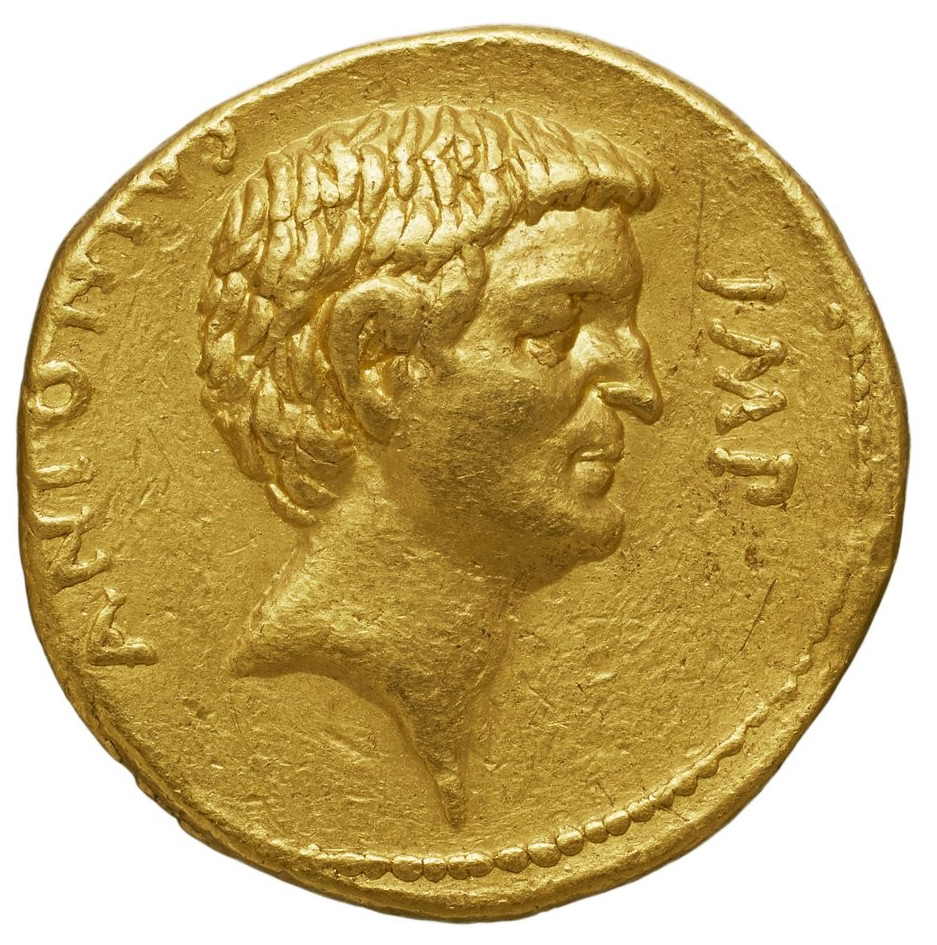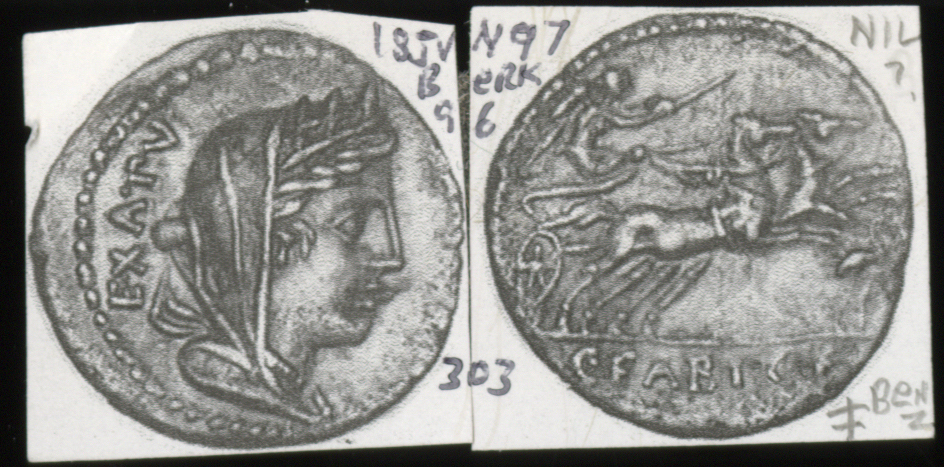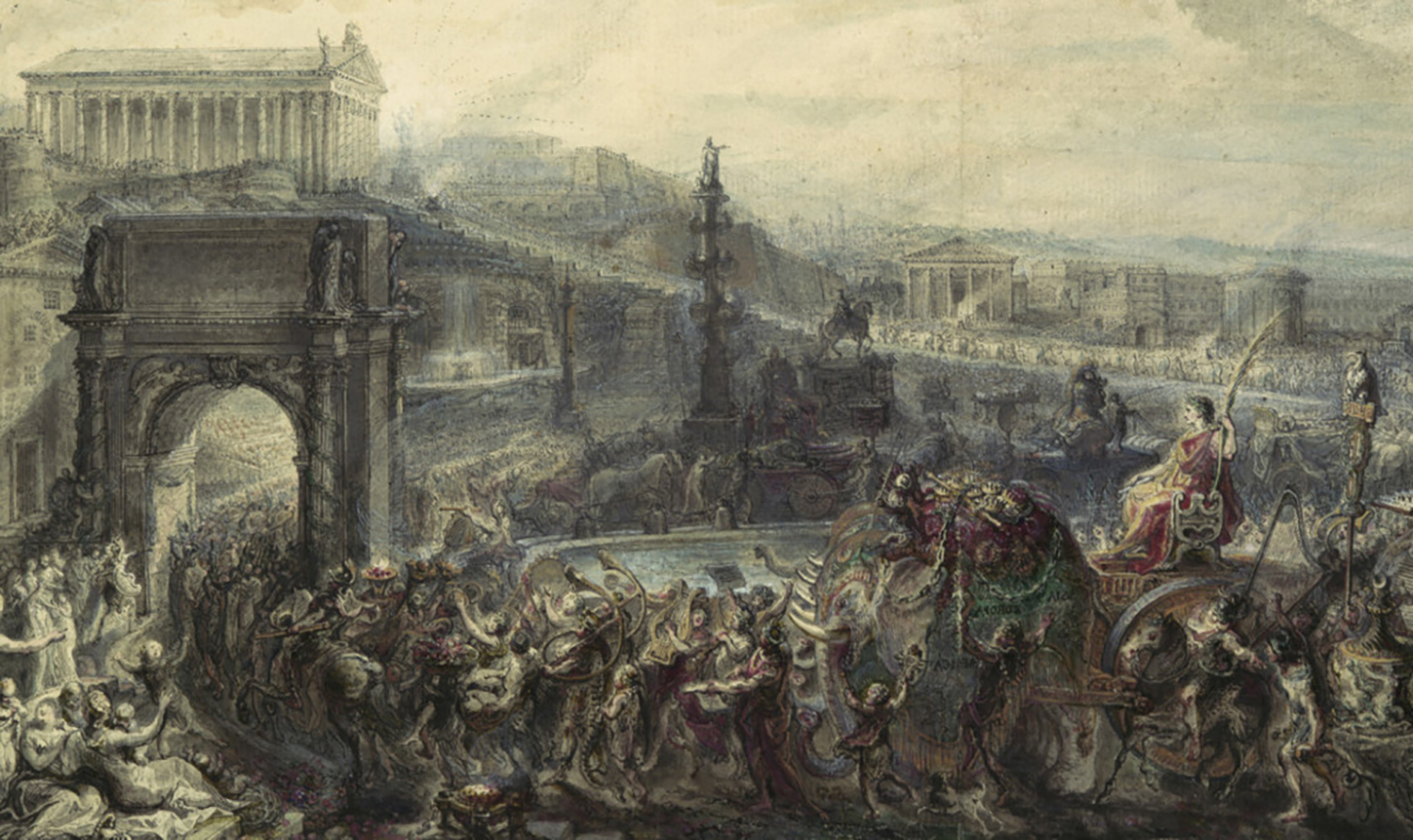Trajan's Triumph
From 101 to 106 CE, the Roman Emperor Caesar Traianus Divi Nervae Filius Augustus Germanicus Dacicus, more commonly known as the emperor Trajan, waged back to back wars in the ancient territory of Dacia, a region covering modern Romania, Moldova, and surrounding area. Trajan’s victory in these wars was a source of prestige and provided the Roman Empire with a supply of wealth in the form of imported slaves and newly accessible gold mines.
Trajan decreed one hundred and twenty-three days of celebration following the final conquest of Dacia and its conversion into a province. In the years that followed, the benefits of these campaigns reached Rome in the form of plunder brought back by the returning army. Precious metal objects were paraded in triumphant processions through the city before they were melted down and minted into imperial denarii. The coins from this period, which were produced in a variety of types and variations, commemorated the victory and celebrated the might of Rome.

This silver denarius has a typical obverse showing Trajan’s portrait, identifying him by name (IMP TRAIANO), including his titles denoting his military victories in Germany and Dacia, and recording the year it was struck in the form of the number of his consulships. The reverse shows Nike, the goddess of victory, inscribing DACICA on a shield, which hangs on a palm tree (yet another symbol of victory). The legend S P Q R OPTIMO PRINCIPI indicated that the coin was struck at the behest of the Senate and the Roman people for Trajan.
Like many Roman coins, the imagery and meanings duplicate and reinforce each other, presenting Rome as an invincible force almost predestined to add territory and expand. These images, together with the legend, follow patterns of inscriptions and iconography that were utilized in the construction of his forum and the famous Trajan’s column, which celebrated the discipline and strength of the Roman legions. The free-standing column wreathed in an elegant spiral bas relief was completed in 113 CE and is about 100 feet in height. It’s dedication reads:
The Senate and people of Rome to the Emperor Caesar Nerva Trajan Augustus, son of Nerva of blessed memory, conqueror in Germany and Dacia, High Priest, vested with the tribunician power 17 times, proclaimed Imperator 6 times, elected consul 6 times, Father of the Nation: as an illustration of the height which this hill and place attained, now removed for such great works as these.
Interestingly, both the coin and the inscription on the column recognize the agency of the Roman Senate and people (Senatus Populusque Romanus), and acclaim their triumph alongside that of Trajan’s. As with other Roman emperors, the right to strike coinage was one that was technically granted by the Senate as representatives of the people. Moreover, the erection of the column, though organized by Trajan and his favored architect, Apollodorus of Damascus, was technically a Senatorial project, not an imperial one. The coin was struck five years after the wars, but predated the completion of the column and thus helped to keep the memory of the Dacian Wars alive until the grand monuments could be completed.
This is the first in a series of guest posts by students attending the Eric P. Newman Graduate Seminar in Numismatics.





